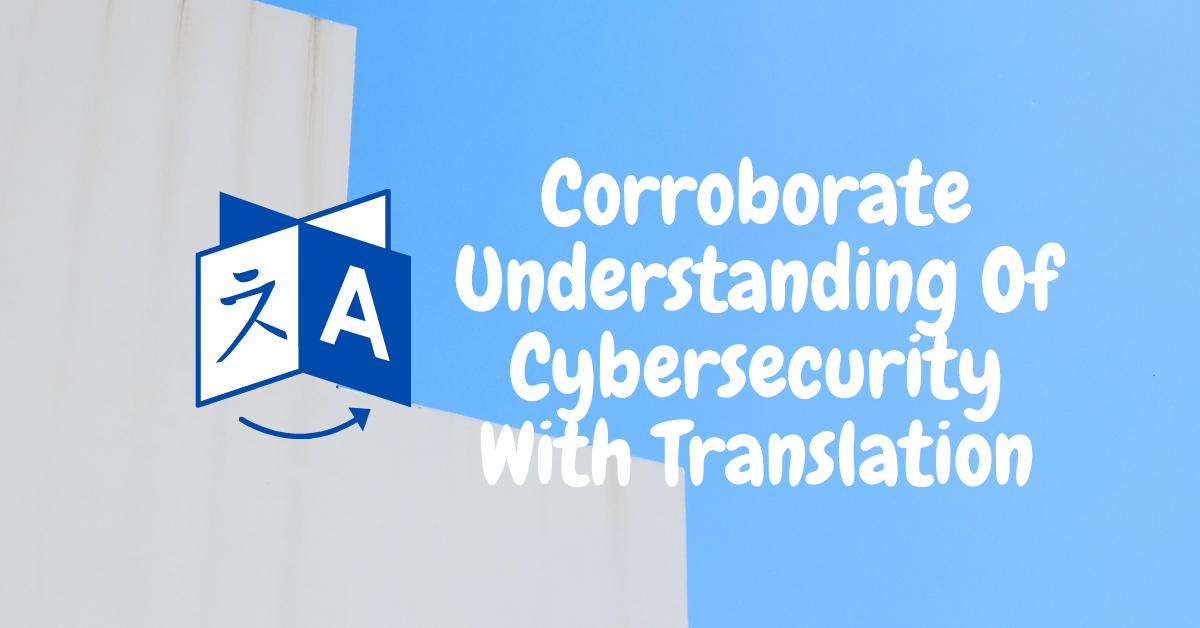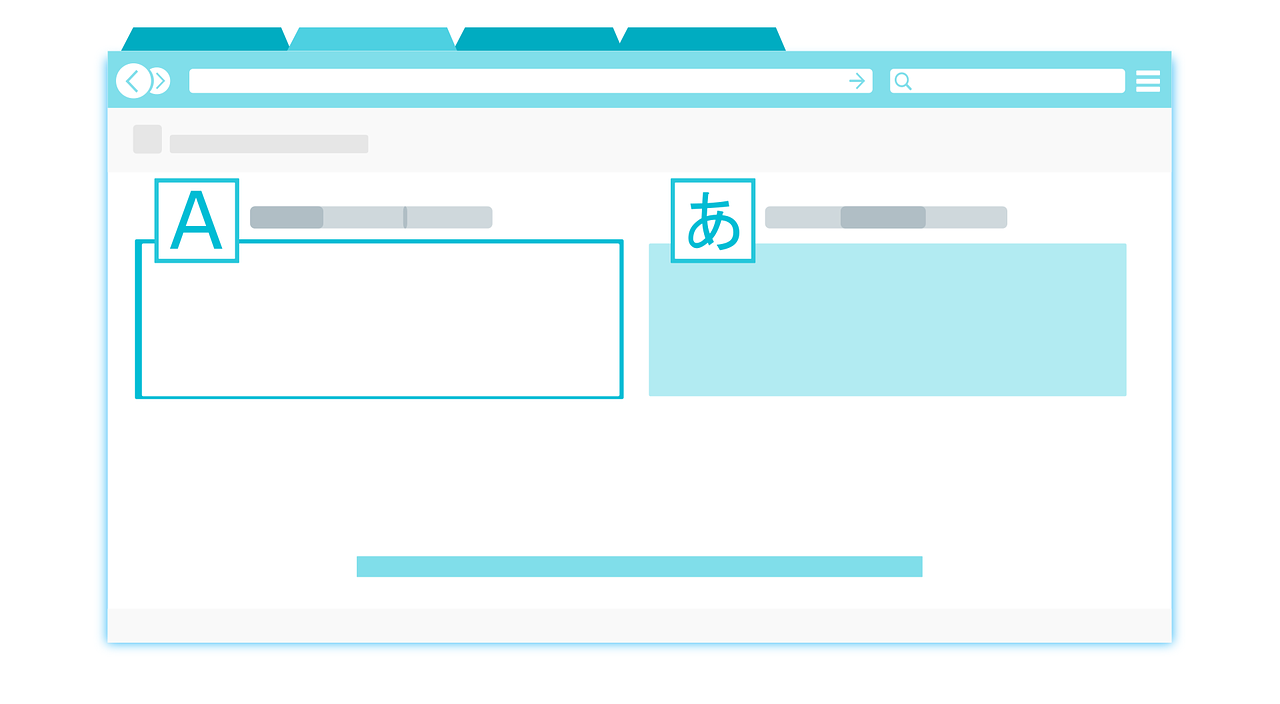Can cyber attacks affect online document translation? Read on as we show you how cybersecurity corroborates with translation.
The field of internet and technology is continuously evolving. While this internet has opened doors for many new and existing businesses to grow and flourish, it also holds a dark side that is often overlooked. Due to businesses' high reliance on technology, digital data creation has emerged, giving rise to millions of terabytes of data being shared on the internet.
However, the data that is shared online needs to be ‘secured’ as well,' as leakage of this data means huge losses for companies—this ‘security’ emerges from a term commonly known as cybersecurity. Cybersecurity ensures integrity, confidentiality, and availability of information shared on the internet.
Also known as information security, it comprises tools such as risk management, training, and technologies to protect networks, devices, and data from unauthorized access and usage.
Data protection is so essential that companies that have failed to secure their data may find themselves in huge losses. According to an estimate, a data breach can cost an organization approximately $3.6 million on average. This means corporations lose about $300 billion to $1 trillion annually due to these cyberattacks.
Fortunately, some ways have surfaced, ensuring that data is secured and data security knowledge is available to all. Translation aids in making this knowledge accessible to all, especially to those most vulnerable. You can learn how to translate on Google using this guide.
Table of Contents
Corroborating Your Cybersecurity Knowledge Through Translation
Here's a strategHere'solidify your understanding of cybersecurity by translating key concepts into different languages:
- Choose Core Cybersecurity Terms: Start with a list of fundamental cybersecurity terms like “encryption,” “phishing,” “firewall,” “vulnerability,” “authentication,” and “multi-factor authentication (MFA).”
Understanding Through Translation: Once you have the translations, explain the concept behind each term in your own words without referring back to the English definition. This forces you to grasp and rephrase the core meaning using your understanding.
Reverse Translation (Optional): After formulating your explanation, try translating it into English. This step helps identify any misunderstandings you might have and refines your comprehension.
Expand Your Knowledge: Look for cybersecurity resources in your chosen target language. This could be news articles, blog posts, or even short videos. Understanding these resources will further solidify your knowledge and expose you to different perspectives on cybersecurity.
By using translation as a learning tool, you can effectively solidify your grasp of cybersecurity concepts and broaden your knowledge base uniquely and engagingly.
Here are a few types of cybersecurity threats, examples of cyberattacks, and how translation can aid cybersecurity efforts.
Cyber Threats—the types
A challenging task in dealing with vast amounts is ensuring its confidentiality and security. However, cyber threats can wreak havoc with this data protection, making it mandatory to employ cybersecurity measures to keep data secure. Cyber threats can take many forms, of which the most common ones are:
- Malware: a form of malicious software, malware damages the working of computers. Trojan horses, key loggers, and spyware are common types of malware.
- Phishing Attacks: phishing is one of the most common cyber threats. Phishing is a form of fraud where fake and fraudulent emails are sent that resemble emails from reputable sources. This is why these emails aim to steal personal data such as credit card and login information.
- Ransomware: This is malware that encrypts data unless a ‘ransom’ is paid ‘ for it.' Countless companies worldwide have been affected by ransomware viruses through these times.
- Social Engineering: relying on human interaction, social engineering tricks users into breaking security protocols and guidelines while obtaining sensitive information that is usually secured.
READ ALSO: Why Your Business Needs To Invest In Cybersecurity Solutions
Some Examples of Cyber Threats
There have been countless examples of cyberattacks throughout history since the internet evolved. While most of these cyberattacks have been dealt with, they are an example of how severe impacts these cyber threats can impose.
Additionally, these cyberattacks have weakened companies' internal data management systems, resulting in huge losses that are still unrecoverable.
Here are a few examples of countries that have been most affected by cyberattacks over the years:
1. The Case of Denmark
Initially starting in 2015, cyberattacks in Denmark gained momentum in 2017. The servers, as well as email accounts of staff members of Danish Ministries, were attacked many times.
Some examples of these attacks are the “Petya” ransomwa”e tha” affected Denmark’s largesDenmark'scs and transport giant and Denial of Service attacks (DDoS) from Turkish hacking groups in 2017.
2. Cyber Attacks on Russia
Believed to be the source of many cyber crimes, Russia has been vulnerable to cyberattacks for a long time.
The Petya ransomware that affected Denmark companies also attacked large Russian organizations such as Rosneft, the biggest producer of oil in the country.
Other than that, a ransomware ‘WannaCry’ affec'ed a lar'e number of computer systems in Russia, threatening the office of the Russian Interior Ministry.
3. Cyber Crimes in Japan
When it comes to cyberattacks, Japan has been quite vulnerable to such attacks. WannaCry, ransomware affected more than 500 computers in Japan and forced Honda Motors Company to suspend operations.
Cyberattacks on Japan caused a leak of approximately 12.6 million corporate information.
Cybersecurity With Translation—How are they Related?
The technology field has terms and jargon that are not understandable to everyone. Only those people who are computer experts can understand the terminologies related to computers.
This is why most businesses are affected by cyber threats—their employees know little about these data attacks.
READ ALSO: Is Google Translate Secure? [We Have The Answer]
However, translation plays an important role in equipping these staff members with the knowledge and guidelines of cybersecurity. If made available across companies, the translated guideline documents and texts can pave the way for protection against data threats and cyberattacks.
This is why the IT departments of organizations should have their procedures and guidelines translated by professional translation agencies in more than one language so that they are accessible and understandable to all.
Moreover, a senior official may not notice that data has leaked due to little knowledge of cyberattacks or facing threats. In that case, a translated manual enlisting all the guidelines to detect data breaches will be extremely useful in avoiding these threats, resulting in minimizing losses.
The Last Word
As technology continues to evolve and grow, threats to secure and confidential data are to be expected. However, companies can take practical steps to deal with these threats while reducing the chances of losses by ensuring their employees are aware of these cyberattacks.
This can be ensured by translating the guidelines, procedures, and instructions on how to avoid and deal with cyberattacks. While a professional translation agency will be the best partner in securing confidential information, the right proactive approach can be a massive step in guaranteeing that the company does not face any cyber threats and losses.
What are your thoughts regarding cybersecurity with translation?
RELATED POSTS
About the Author:
Amaya Paucek is a professional with an MBA and practical experience in SEO and digital marketing. She is based in Philippines and specializes in helping businesses achieve their goals using her digital marketing skills. She is a keen observer of the ever-evolving digital landscape and looks forward to making a mark in the digital space.









